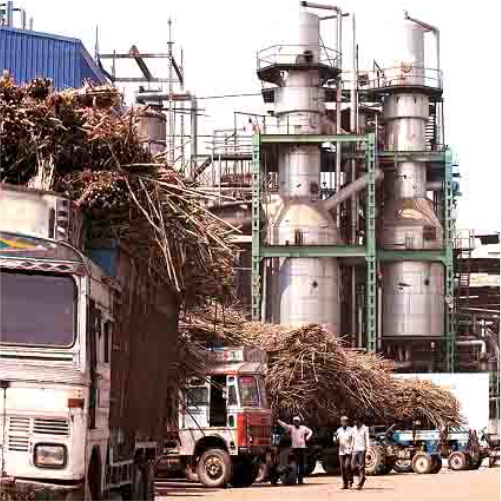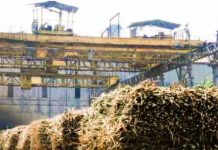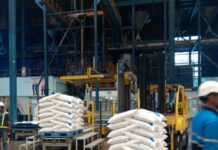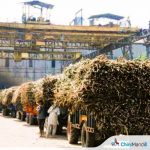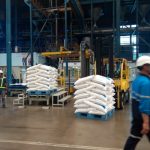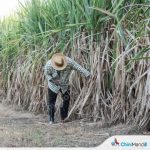The utilization of Electrocoagulation (EC) in the treatment of wastewater generated by the sugar industry emerges as a powerful solution. This technology, known for its efficacy and numerous advantages, addresses the challenges posed by the presence of organic matter, colorants, and impurities in sugar production wastewater.
Benefits of EC for the Sugar Industry:
– Precision Treatment: EC excels in the removal of suspended solids, colorants, and organic matter, which are crucial pollutants in sugar industry wastewater.
– Enhanced Efficiency: A well-optimized EC process significantly reduces the volume of wastewater that needs further treatment through other methods.
– Environmental Impact Reduction: The discharge of cleaner wastewater contributes to less environmental pollution stemming from sugar production.
EC Process Tailored for Sugar Wastewater:
The fundamental principles of EC remain constant, but adaptations for sugar industry requirements include:
1. Mixing: Coagulants, typically aluminum or iron, are thoroughly mixed with the wastewater for optimal contaminant capture.
2. Electrodes: Stainless steel electrodes are immersed in the wastewater solution.
3. Power Supply: Electricity is applied, initiating the formation of coagulant metal hydroxides.
4. Coagulation and Flocculation: Metal hydroxide coagulants attract and bind to impurities, forming larger flocs.
5. Separation: Techniques such as sedimentation, filtration, or flotation separate flocculated contaminants from the treated water.
6. Treated Water and Sludge Management: The purified water can be reused in sugar production, reducing freshwater consumption, while the separated sludge requires proper disposal.
Advantages of EC for Sugar Wastewater Treatment:
– Efficiency and Cost-Effectiveness: EC offers a simpler and potentially more cost-effective alternative to traditional chemical coagulation methods.
– Reduced Sludge Volume: Compared to chemical coagulation, EC often produces less sludge, simplifying disposal.
– Versatility: EC can adapt to handle fluctuations in wastewater composition, a common challenge in sugar production.
The Saga of EC and the Sugar Industry:
– A Quest for Clarity: EC, with coagulant steeds of aluminum and iron, valiantly banishes suspended solids, colorants, and organic foes from sugarcane’s liquid legacy.
– The Alchemist’s Touch: Through optimization, EC transforms vast volumes of wastewater into clearer streams, reducing the need for further treatments.
– A Greener Pasture: Once-polluted waters, now cleansed by EC’s touch, flow back to nature, leaving a reduced footprint on the earth.
EC’s Journey Through Sugary Streams:
1. The Gathering: Coagulants convene, ready to ensnare impurities within the wastewater.
2. The Steel Sentinels: Stainless steel electrodes stand guard in the aqueous realm.
3. The Spark of Life: Power breathes life into the process, awakening coagulant metal hydroxide formation.
4. The Great Binding: Metal hydroxides capture particles, forming larger flocs as if by magic.
5. The Separation: Flocs, heavy with captured impurities, are removed, leaving water in a state of newfound purity.
6. The Cycle of Rebirth: Treated water returns for sugar production, and tamed sludge finds its final resting place.
The Boons of EC in the Land of Sugar:
-The Economical Elixir: EC offers simplicity and cost savings, an alternative to complex traditional methods.
– The Minimization of Waste: EC produces less sludge, a lighter burden for land keepers.
– The Chameleon’s Gift: EC adapts gracefully to the ever-changing waters of sugar production.
The Chronicles of Implementation:
– The Fine Tuning: Finding the golden ratio of current density and electrode material is key to EC’s prowess.
– The Responsible Steward: Managing the sludge, a byproduct of EC’s conquest, ensures the land remains unspoiled.
Epilogue:
The tale of Electrocoagulation unfolds as a noble process in the service of the sugar industry. Its deeds of purification, cost-efficiency, and adaptability are celebrated by bards, heralding a new era of environmental stewardship and water wisdom.
Considerations for Implementation:
– Optimization: Identifying optimal operating parameters is crucial for maximizing treatment efficiency.
– Sludge Disposal: Proper management of the metal hydroxide sludge generated during EC is necessary.
Conclusion:
Electrocoagulation presents a promising and sustainable approach for treating sugar industry wastewater. Its effectiveness, potential cost savings, and adaptability make it an attractive option for sugar producers seeking to improve their environmental footprint and water management practices.
Disclaimer: The views and opinions expressed in the article by Dilip Patil, Managing Director of Samarth SSK Ltd., are solely his own.

